Due to Western Australia’s wide expanses of geologically old rocks, the State is considered one of the most important research areas on the origin and evolution of early life on Earth.
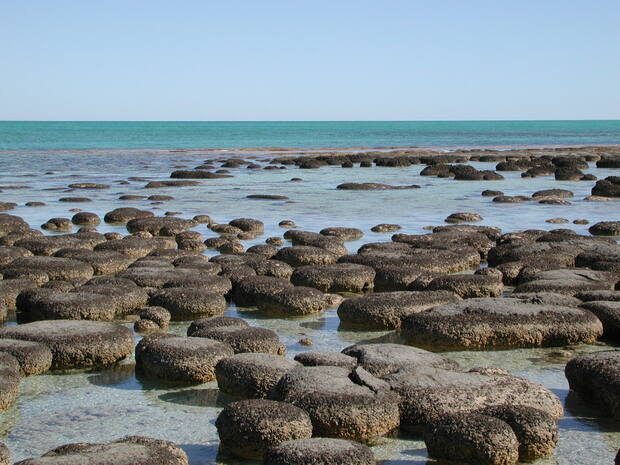
In particular, Western Australia is endowed with significant sites of both fossil and living microbialites. Stromatolites, the commonest type of microbialites, are abundant in rocks older than 500 million years (which cover nearly two-thirds of the State), and are key fossils for understanding the origin and evolution of life. The Geological Survey of Western Australia (GSWA) has developed a scheme for using stromatolites to correlate ancient rocks that are otherwise difficult to date, termed ‘stromatolite biostratigraphy’. As a result, Western Australia has become a world leader in the geological application of these fossils.
Microbialites
‘Microbialite’ is the name given to structures built mainly by cyanobacteria (also known as blue-green bacteria or, less correctly, as blue-green algae). Although these microbes regularly build flat carpet-like structures, called microbial mats, the word ‘microbialite’ is normally reserved for features that rise above the sediment surface, in the form of mounds or groups of mounds. Scientists subdivide microbialites based on their internal structure. This includes those with internal laminae or layering known as stromatolites (e.g. some in Shark Bay and most fossils), as well as mounds with a clotted or ‘cauliflower’ fabric called thrombolites (e.g. Lake Clifton).
Although cyanobacteria and the structures they build are still found today, they were once much more common and the dominant fossil-forming organisms of the Proterozoic Eon. Living microbialites are found mainly in environments that other organisms cannot tolerate like saline lakes, sea bays with restricted water circulation and hot springs.
The best examples of living microbialites can be seen at Hamelin Pool in Shark Bay about 800 kilometres north of Perth. Microbialites can also be found only a short distance from Perth at Lake Clifton near Mandurah, Lake Thetis near Cervantes, and Lake Richmond near Rockingham.
Stromatolites

Stromatolites have been recorded in many parts of Western Australia. Geologists from GSWA use fossil stromatolites as a mapping tool, specifically to correlate rocks across vast distances of the State. This correlation helps geologists to work out the age of rocks that cannot be dated using other methods such as radiometric geochronology.
Highlights of stromatolites in our State include:
- the world’s oldest known examples of fossil stromatolites (3.45 billion years old), found near Marble Bar in the Pilbara
- one of the most continuous and best-studied records of fossil stromatolites, with examples from a broad range of geological periods
- some of the best examples of living microbialites at Hamelin Pool and in various lakes around the State — these localities are ‘living laboratories’ where the structures, the environments in which they form, and the processes that form them, can be studied and the results applied to the interpretation of equivalent structures in the geological record.
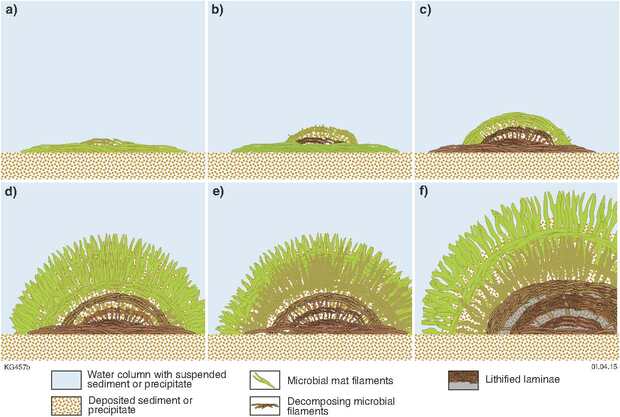
How microbialites form
Microbialites are structures built mainly by photosynthetic cyanobacteria. These structures are still found today, but were much more common in the geological past, dominating the fossil record in the Proterozoic Eon.
Characteristics of microbialite formation include the following:
- within the mat, microbes will either trap and bind sediments or precipitate minerals forming alternating layers of organic-rich filaments and sediments
- as microbes are photosynthetic, they will slowly move up through deposited layers to reach light, thereby progressively forming new layers on the outer surface. Trapped or precipitated sediments in the older layers within the structure will then harden into rock (lithify)
- over long periods of time, these layers of sediments and microbes build up to form stratiform, domical, columnar, conical, or complex branching structures
- structures formed by microbes can range in size from smaller than a little finger to larger than a house. Some branching stromatolites resemble modern corals
- many microbes are photosynthetic and produce oxygen as a result of their metabolic activities. In the Proterozoic Eon, such organisms converted Earth's atmosphere from one dominated by greenhouse gases to one with breathable oxygen.
Why is the study of microbialites important?
For the past 30 years, GSWA has been documenting key sites in the eastern Pilbara that are considered to contain some of the world’s oldest fossils, including the microbialites described above and possible fossils of the microbes themselves. GSWA has organised numerous international excursions to these areas so that geologists, paleobiologists and astrobiologists can examine the evidence for early life. The sites have also featured in many popular science articles and in the media.
Astrobiologists are particularly interested in these localities because of the search for life on Mars. Earth and Mars probably shared similar early histories, and recent exploration has uncovered considerable evidence that Mars once had environments suitable for stromatolite growth. If stromatolite-like structures are found on Mars, the Pilbara localities will provide significant analogues for comparison with potential Martian fossils.
Mineral and petroleum explorers are also interested in understanding where and how microbialites and other early fossils form. There are many examples worldwide where mineral deposits have formed in and around microbialites, by mineral-rich waters flowing through the spaces within the mounds and depositing ore minerals. The spaces in the microbialites can also trap and store hydrocarbons like gas and oil. The organisms that form microbialites are a known source of petroleum, making them interesting targets for petroleum exploration.
Protecting Western Australia’s oldest fossils
The oldest known structures considered to be stromatolites are at the Buick Reserve, near the historic North Pole mining area. The slightly younger Trendall Reserve, which is a little further south and was discovered in 1984 by former GSWA Director Dr Alec Trendall, contains some of the most convincing evidence for ancient stromatolites. This includes large conical stromatolites up to 1 metre high, smaller cones resembling egg cartons, and domes that develop into branching columns.
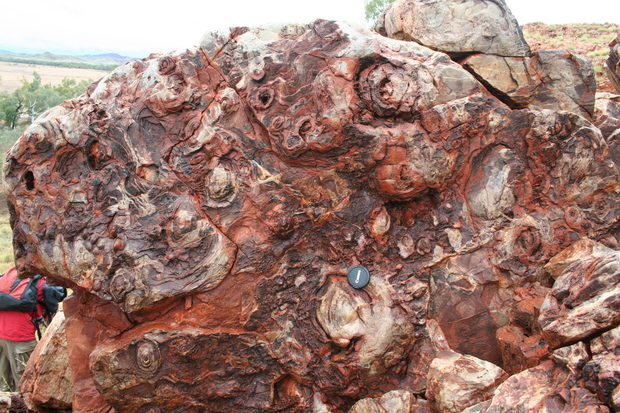
These sites, plus four other significant stromatolite and microfossil localities (Awramik, Lowe, Schopf, and Hickman), have recently been declared as geoheritage reserves to protect vital field evidence. Permission is needed to visit or carry out activities like sampling within these Reserves.
A more accessible locality, the ‘Dawn of Life Trail’ site, is located 60 kilometres south of Marble Bar and 1 kilometre west of the Marble Bar on Nullagine Road. At this locality, members of the public can see fossils similar to those at remote scientific sites. Visitors are asked to refrain from collecting and to treat the fossils at the site with respect, so that future generations may also enjoy them.
More information
-
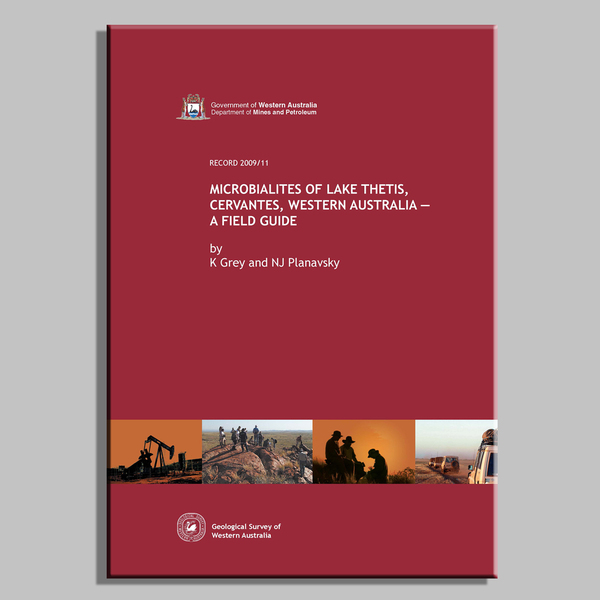 Record 2009/11 Microbialites of Lake Thetis, Cervantes, Western Australia — a field guide
Record 2009/11 Microbialites of Lake Thetis, Cervantes, Western Australia — a field guide
-
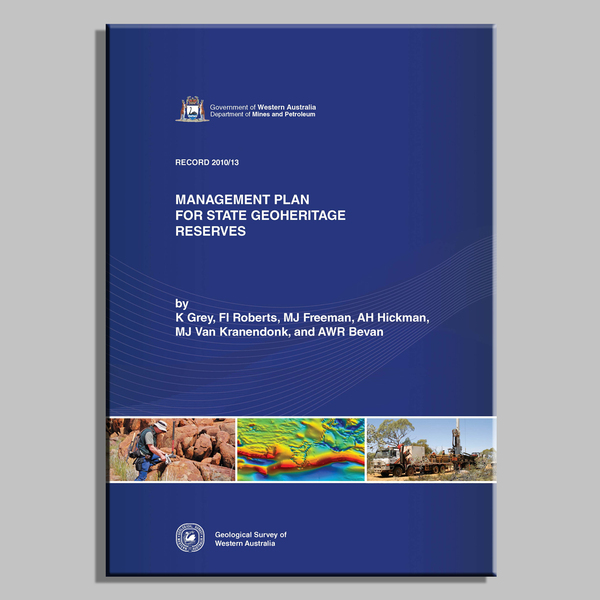 Record 2010/13 Management plan for state geoheritage reserves
Record 2010/13 Management plan for state geoheritage reserves
-
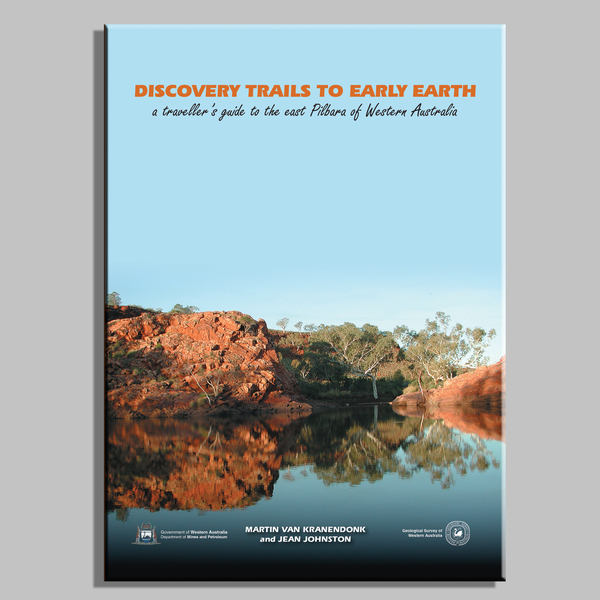 Discovery trails to early Earth — a traveller's guide to the east Pilbara of Western Australia
Discovery trails to early Earth — a traveller's guide to the east Pilbara of Western Australia
-
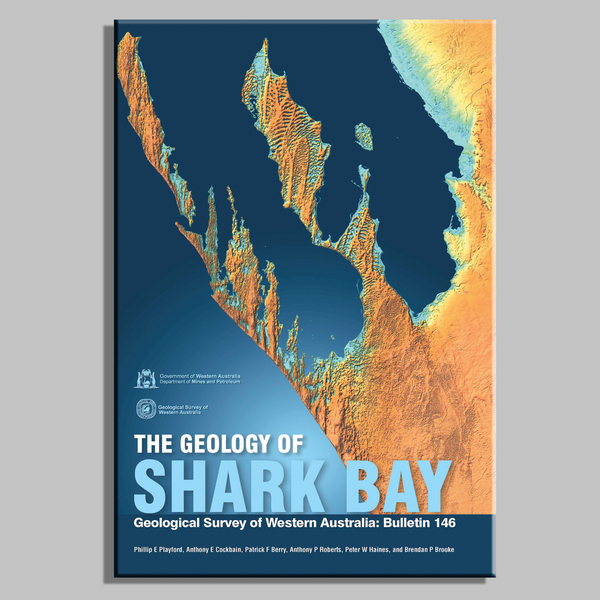 Bulletin 146 The geology of Shark Bay, Western Australia
Bulletin 146 The geology of Shark Bay, Western Australia
-
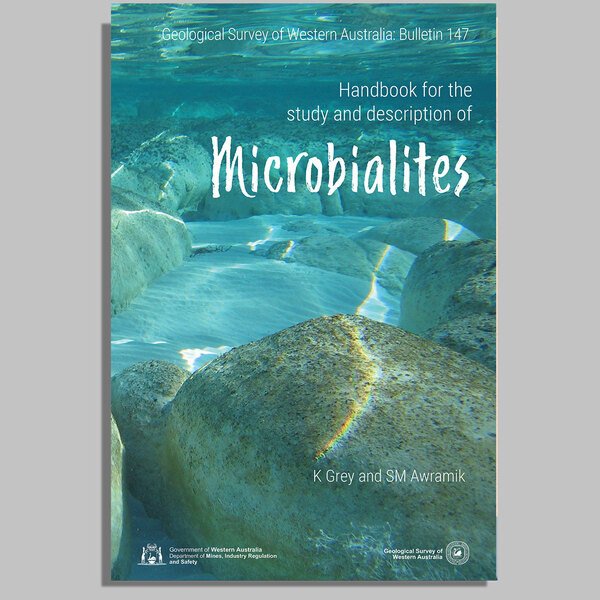 Handbook for the study and description of microbialites
Handbook for the study and description of microbialites
Western Australian fossil law
In Western Australia, fossicking and fossil collecting is permitted under the following conditions:
- collectors first obtain a Miner’s Right from the Department of Mines, Industry Regulation and Safety (DMIRS)
- written permission has been granted when collecting on people’s property or pastoral leases
- no collecting is to be made on Crown Reserves (e.g. National Parks, State Forest areas, regulated Geoheritage Reserves) without prior written approval from the relevant State or Federal Government agencies. The only exceptions to this are those State Reserves listed as having a Common, Public Utility or Mining purpose.
All collectors are encouraged to bring interesting fossils to either GSWA or the Western Australian Museum for identification. Understanding what fossils are found and where helps scientists better understand the geology of the State and helps government correctly identify and regulate important fossil sites for future generations.
It should be remembered that any Australian fossils sent overseas (even for non-commercial purposes) are subject to Federal Heritage laws. See the Federal Moveable cultural heritage website for more information.
Many of the fossils discussed here, including the Trendall locality ‘egg carton’ stromatolites, can be seen in the Western Australian Museum’s Origins gallery.
External links covering a range of topics relating to Australian fossils, paleontology and geological time can be found on External websites.
Contact
For more information contact:
paleontology@dmirs.wa.gov.au
